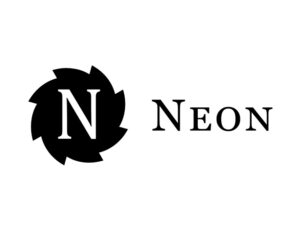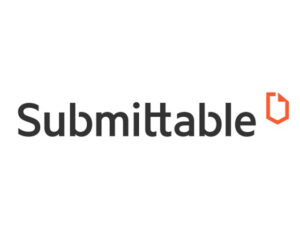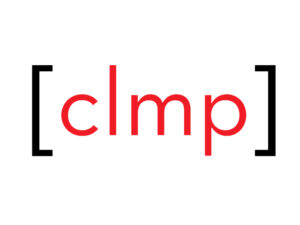This article is designed to be a complete guide for anyone who is interested in having their short story or poem published in a literary magazine. You’ll probably find it most useful if you’ve never sent out your work before, or if you’re just beginning to try and get published.
This guide is specific to literary magazines. The process for pitching articles, interviews, reviews or features to commercial magazines is completely different. The below applies primarily to publishing short stories and poems in litmags and anthologies.
Contents
Understanding submission guidelines
Submission managers, postal submission and fees
Staying positive about submissions
Finding the right publication
The first step towards publishing your work is to find a magazine that you’d like to be published in.
Familiarising yourself with a magazine by reading a few back issues hugely increases your chances of being able to publish your work there – and also helps support the magazine itself!
If you can’t afford to buy a copy of a magazine you want to submit to, but you may be able to browse a copy at your local library, or read free extracts on the magazine’s website.
To help you discover the right magazine for your work, there are a number of resources available.
For a small monthly fee, Literistic provides a curated list of upcoming publication deadlines.
Duotrope also charges a fee, but is particularly comprehensive, featuring a database of more than 2,000 literary magazines.
Neon‘s own modest list of UK-based magazines is also worth a look.
Understanding submission guidelines
Once you’ve found a magazine that publishes your kind of work, look for the guidelines. These will usually have a page of their own on the magazine’s website, or be printed in the magazine itself.
By reading the guidelines you can find things like maximum or minimum wordcounts, and the format in which the editor would like to receive your work.
Some of the language from guidelines pages might be a little unfamiliar. Here’s a glossary:
| “Simultaneous Submissions” | This refers to the practice of sending out the same story or poem to several magazines at once. A lot of publishers are happy for you to do this, but some will ask for no simultaneous submissions – if you send them your work, then you should wait for a reply from them before sending it anywhere else. | |
| “Withdrawal” | If you do send your work out to several magazines at once, and it is accepted by one of them, you’ll need to withdraw it from the other markets. This is usually done by sending an quick, polite email to the editorial email address. | |
| “Multiple Submissions” | This refers to the practice of sending more than one story or poem to the same magazine. Some magazines want to receive more than one piece at once, while others prefer to concentrate on one piece at a time. | |
| “Reprints” | Reprints are stories or poems that have been published before. Most magazines want previously unpublished work, but there are some that are happy to take reprints. |
Understanding rights
Sometimes the guidelines will state the rights that the magazine takes to your work. Rights are not the same thing as copyright.
As the creator of the work you own the copyright by default.
You can, however, give other people rights to do things with your work. Here’s a glossary of what different rights-related terms mean:
| “First” | This is the right to be the first publisher to publish the piece of writing in question. |
| “Serial” | This is the right to publish the piece of writing in printed form in a magazine. |
| “Online/Electronic/Digital” | This is the right to publish the piece of writing on a website, or in an eBook. |
| “North American/British/World” | The inclusion of a territory indicates the area in which the piece will be published. If a publisher takes North American rights, they may only publish the piece in North America – they cannot then pass it to the British arm of their organisation and publish it there too. |
| “One-Time” | This indicates that the right will only be exercised once. If the publisher wants to reprint the piece in a “best of” collection they would have to seek your permission again. |
| “Archival” | This is the right to store the work and make it available in the magazine archives. This means that even when the issue of the magazine in which your work appears is no longer current, it will still be readily available in their archives. |
| “Non-Exclusive/Exclusive” | Exclusive rights are just that – exclusive. If a publisher wants exclusive online rights, that means they want to be the only ones to publish that piece online. If a publisher specifies that they take non-exclusive rights, then they are happy for the piece to appear elsewhere as well. |
| “Anthology” | This is the right to print the piece in an anthology or collection. A publisher might ask for this right in addition to others if they are considering publishing a “best-of” collection at the end of the year. |
| “Audio/Film” | Audio rights grant the publisher the right to publish an audio recording of the work. The same for film rights, although most literary magazines don’t have the budget for movie adaptations! |
So, for example, a publisher that asks for “first North American serial rights, electronic rights and audio rights” wants to be the first magazine in North America to print the work, and also be allowed to publish it online and in audio format as well.
Formatting your work
In general, when formatting your work, you should do what the guidelines say. If the magazine would prefer work to be pasted into the body of an email, do that. If they ask for attachments, send an attachment. If they want a particular font or type size, then use that font or type size, even if you think it looks rubbish.
If, however, the guidelines provided by the magazine have nothing to say about how you should format your work, you can use standard manuscript format.
Rather than providing a long description of standard manuscript format, I’ll instead refer you to the expert. William Shunn is the definitive source on manuscript preparation, and on his site you’ll find easy-to-follow instructions on how to format your work:
It may seem like a lot of work getting your manuscript looking like the examples provided by Shunn, but it’s worth the effort. It makes life easier for an overworked editor, and makes you look professional. Editors might well bin manuscripts that deviate wildly from the formula, so it’s worth taking a few minutes to get things right.
Submission managers, postal submissions and fees
There’s an almost limitless number of ways for magazines to accept submissions, and so you won’t always simply be sending an email attachment. Here are some guidelines for a few different situations which you might come across.
Pasting into the email body
Some magazines will ask you to paste your work into the main body of the email, rather than sending it as an attachment. This is easy to do, but can cause problems. Your perfectly-formatted manuscript can end up looking a mess once you’ve transferred it to an email.
To prevent this, copy and paste the text from your manuscript into Notepad (or any other plain text editor). Then copy and paste it again from there into the email. This strips away unnecessary formatting, and ensures a clean and tidy result. You might need to play around with the spacing while you have the text in Notepad, but this little extra effort is very much worth the result.
Postal submissions
Magazines that take submissions only by post are rare, but some of the biggest magazines still insist on it. Here are some pointers for a clean, easy-to-manage postal submission. Again, if the magazine has its own guidelines on how to send your postal submission, follow those instead!
- Don’t fold the manuscript. Buy an envelope big enough to accommodate it without folding.
- Don’t staple or bind your manuscript. Secure the pages together with a paperclip.
- Include a self-addressed envelope. If you want your manuscript returned the envelope must be big enough, and have sufficient postage. If you don’t want your manuscript returned, say so in your cover letter – you can then include a smaller envelope for the editor’s response only.
Fees
Some publications charge a small “submission fee” or “reading fee” to consider your work. You should think carefully about whether or not you want to submit your work to a magazine which charges a reading fee.
In some cases, these fees are what allow the magazine to pay writers – and magazines which charge fees are less competitive than those which don’t. On the other hand, will you be happy paying the fee requested just to have your work read, with no guarantee of acceptance?
Furthermore, ask yourself why the magazine needs to charge a fee to submitters. Is it not making enough money through subscriptions and sales? A magazine which relies on reading fees may, ironically, not have many readers!
Submittable, Moksha, and the CLMP Submissions Manager
There are a few common bits of kit that magazines use to handle submissions.
Submittable is by far the most popular one for literary magazines. It’s user-friendly and intuitive, and you only need to create one account to be able to submit to all the magazines that use it.
Moksha is another submissions handler which is popular with sci-fi and horror publications. You don’t need to make an account with Moksha in order to use it to submit to a magazine.
The CLMP Submissions Manager is the third most common submissions handler in use at the moment. It looks old and clunky, but it’s actually very easy to use. You will need to create an account for each magazine you want to submit to.
Writing a cover letter
Your cover letter should be short and to the point. If you can, you should address the editor by name (look for a “Masthead” to find a list of the staff at a publication). Mention that you’re submitting some work, and include the title, wordcount, and if it is a reprint. Mention if you are submitting simultaneously.
If you are submitting by post, the letter should be on its own sheet of paper, separate from the manuscript, and should be laid out like a proper letter. If you’re sending by email, put the cover letter in the body of the email.
Here’s an example of an ideal cover letter:
Dear [MR /MS/MX] [EDITOR’S NAME],
Please find attached for your consideration my previously-unpublished, [WORDCOUNT]-word short story “[STORY TITLE]”. This is a simultaneous submission, but I will let you know immediately if it is accepted elsewhere.
Thanks in advance for your time.
Sincerely,
[YOUR SIGNATURE]
And that’s it! Simple, straightforward, clear. It’s best to aim for a relatively boring cover letter. Don’t try and sell your writing (let it sell itself), and don’t use fancy fonts or annoying gimmicks.
If you like you can include a few words about how you discovered the magazine, or what you like about it in your cover letter. Avoid flattery or false compliments, as most editors will be able to detect these a mile off!
Your biography
Many magazines ask for a brief biography to accompany your work. You can include this in your cover letter. A few magazines have guidelines about what they want in your bio, but most leave it entirely up to you.
If you’ve never written about yourself before, this can be one of the most difficult parts of the whole process!
Generally speaking a bio should be around 50 to 100 words long. It should be written in the third person. You can include information about where you’re from, if you’ve had work published in literary magazines before, where you have studied, or what you do for a living.
If you’re really stuck for ideas, grab a copy of the literary magazine to which you’re submitting and have a look at the biographies of the current crop of writers for inspiration.
Send your submission!
Once you’ve assembled all the different parts of your submission – manuscript, cover letter, biography and so on – there’s nothing left to do but take a deep breath and send it off.
Keeping records and querying
Once you’ve sent your work, make a note of where you sent it, when you sent it, and when you expect to hear a reply. Keeping records is essential if you plan on sending out a lot of work. It means that you won’t end up sending duplicate submissions, and will be able to follow up when necessary.
One good way of keeping track is to use an Excel spreadsheet. It might take a few minutes to learn how to filter or sort your entries, but once you’ve gotten used to the software you’ll be amazed at how efficient it is.
Here are a few of the different outcomes you can expect when you’re trying to get published.
| Acceptance | Great! The editor liked your work, and you’ve been accepted for publication. You’ll probably have to sign a contract or agree to some terms, but you should at some point receive either monetary payment or a copy of the magazine. Congratulations! |
| Rejection | Unfortunately, on this occasion, your work wasn’t right for the magazine. Don’t be discouraged. Keep writing, and keep sending your work out. Persistence is the key to success. |
| Nothing | If you don’t hear back from a magazine, don’t take it personally. They receive a huge number of submissions every day, and some can’t respond to them all. If the magazine specifies an average response time in their guidelines you should wait until that time has passed, then send a polite email to check on the status of your submission. |
Staying positive about submissions
And lastly, a few general pieces of advice to help keep you sane as you seek publication…
- Don’t give up – It can be discouraging to receive rejection after rejection, but keep going. If you stop sending your work out, you’ll never be published.
- Don’t get mad – A rejection doesn’t mean that your work is no good, just that it wasn’t right for that particular magazine. Don’t get wound up when your work is turned down – and don’t burn bridges by firing off an an angry response. Try sending your story or poem to another magazine instead.
- Take criticism – If an editor offers you some feedback when they respond to your submission, you should probably listen. The fact that they took the time to respond personally is a very good sign.
- Keep writing – Above all, keep writing. Keep improving the things you’ve written. Keep coming up with new ideas. That’s what this is all about, after all.







